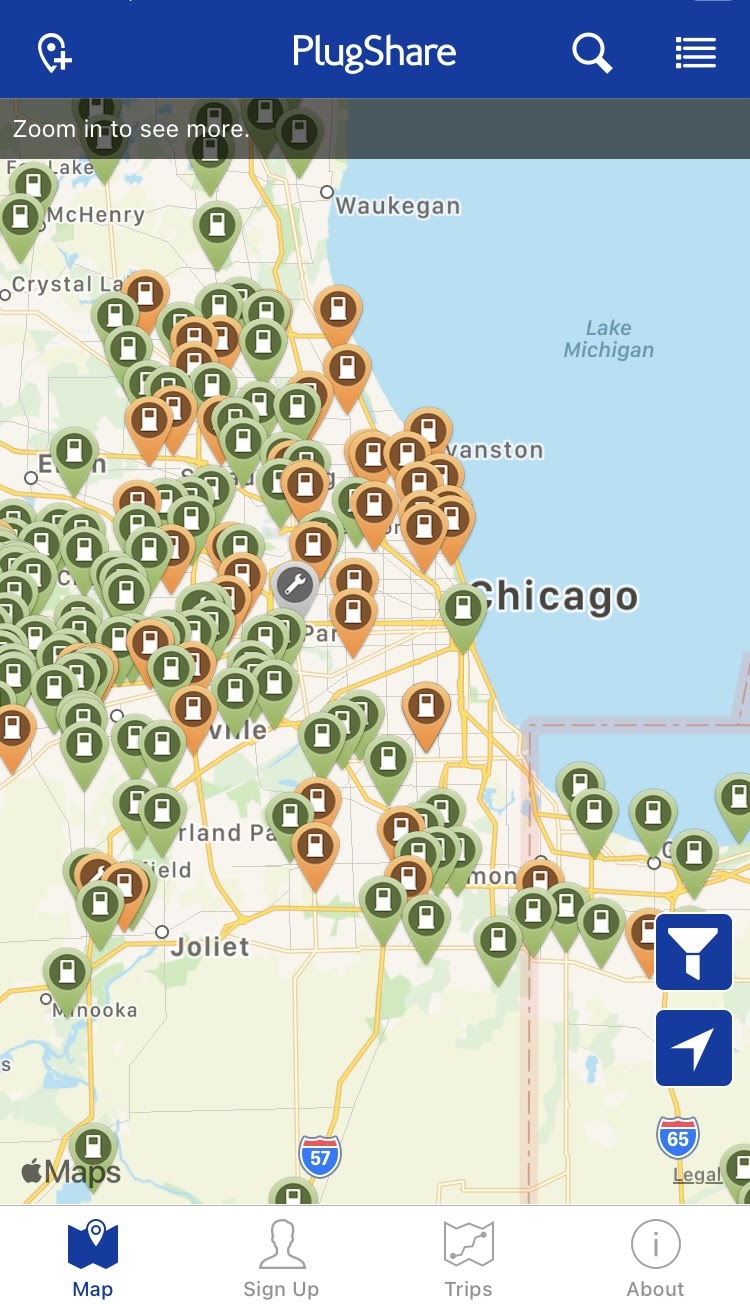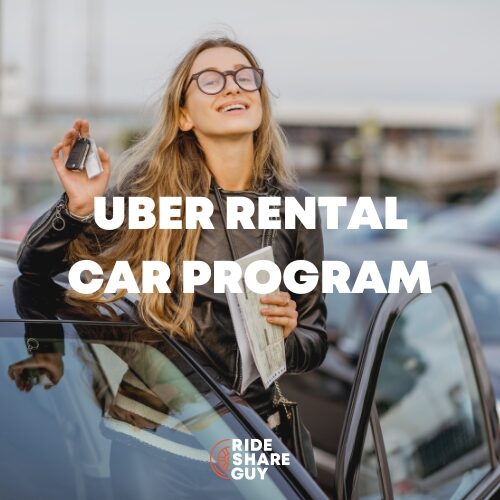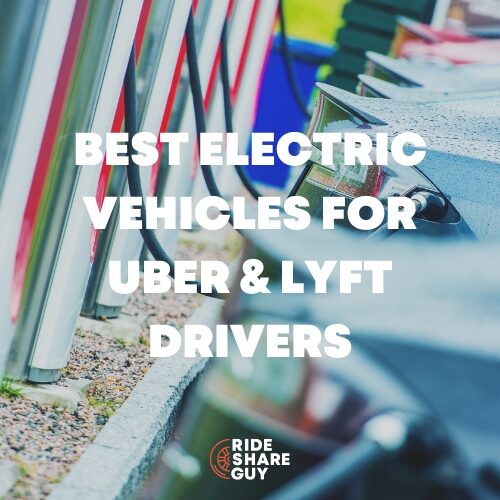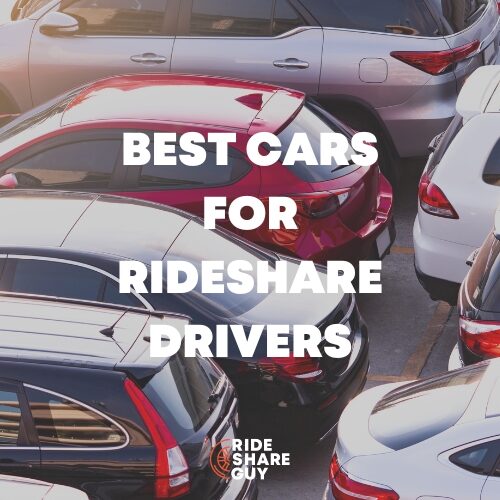👉 Do you use an EV to drive for rideshare or delivery? Join our Facebook Group for EV gig drivers for discussions about the current state and future of EVs.
Uber and Lyft have made it clear they want to have fully electric vehicle fleets by 2030-2040. But are drivers ready to give up their gas guzzlers for electric vehicles? Senior RSG contributor Chonce Maddox-Rhea looked into this trend and what drivers have to say about it below.
Everyone has felt the sting of rising gas prices over these past several months. For rideshare and delivery drivers, however, higher fuel prices are really eating into profits. While electric vehicles (EVs) have been around for a while now, they are looking more and more appealing to drivers these days.
Companies like Ford and Toyota in particular, are focusing on creating more EV options based on high-performing and best-selling gas vehicle models. Yes, there are environmental benefits to switching to an EV, but there are also cost-saving components there as well.
Check out our guide to the cheapest electric cars!
Rideshare companies are also doing their part to help incentivize drivers to consider an EV. However, the key for rideshare and delivery drivers is to determine what’s really the best for your situation and market.
Not driving an EV any time soon but want to save money on gas? Use Upside and save 15 cents on every gallon of gas with our referral code!
EVs Are Here to Stay – What Does This Mean For You?
It’s no secret that electric vehicles, hybrids, and plug-in hybrid cars are here to stay. Also, it seems like the driving industry will slowly be moving closer toward this goal in the coming years. But how soon?
Back in May, California’s Air and Resources Board voted to require ride-hailing companies to add more electric vehicles to their fleets starting in 2023. By 2030, they prefer at least 90% of miles driven for companies like Uber and Lyft to be done in electric vehicles.
Even before then, Uber and Lyft both made announcements that they would be transitioning their platforms to all-electric vehicles (by 2030 for Lyft and 2040 for Uber’s zero-emissions goal.)
Now, if you don’t live in California, this doesn’t mean you’re completely exempt for something like this being proposed in your market as well later down the line. Uber and Lyft announced they wanted their whole fleets, not just California, to be fully electric in the near future.
Money is a Huge Factor
Personally, drivers switching to EVs in droves always seemed like a later-down-the-line type of thing. Then, I spoke with a driver named Shannon who purchased a $85,000 Tesla Model S to drive for Uber and Lyft and took his daily fuel costs from $60 to $0.
In addition to cutting fuel costs in the expensive San Francisco Bay area, Shannon was also able to lower his maintenance costs by 90% while driving heavily and clocking more than 256,000 miles on the vehicle in just 3 years. So yes, these types of electric cars are more expensive, but for a full-time driver like Shannon, it was worth the cost in his case.
On the bright side, every EV does not have a price tag of $80,000+. Over time, we’ve gathered a list of affordable electric car options to consider if you’re on a fence and money is your top factor.
If you’re a numbers person (which you should be if you’re looking to turn a profit), it will often come down to how much you’re spending currently to drive and what you could save by switching to an EV given the initial investment.
Another driver, Kurt Kinder, purchased a Chevy Bolt about 3 years ago and completed more than 6,000 Uber and Lyft trips with the vehicle. Kurt went from paying $18 per day to fuel his vehicle to just $5 per day for electricity saving around $3,000 per year.
Enough Charging Stations?
If money were no object, would an EV be an option? Harry asked a similar question on Facebook last month and a few drivers responded noting that there weren’t enough charging stations near them to consider making the switch right now.
As a rideshare driver, it’s important to be able to access ways to recharge your EV so you can get a more consistent and uninterrupted flow of trips during your work hours.
Some areas are definitely still hotspot cities with the most charging stations, but other areas are increasing their options as well. One Rideshare Guy reader noted that charging stations are not an issue where she lives.
“There are more charging locations than people. Shopping locations, parking garages, hotels, and the list goes on and on,” said Verniecee W. “Even saw them at McDonald’s and Walmart and you have many apps that tell you how far you are for the next station.”
One app that helps locate charging stations in your area is PlugShare. I live in the Chicago area and there are tons of spots within the city and in many surrounding suburbs.

These are charging stations I probably would not have noticed on my own so the app can be time-saving.
Another great feature is that you can plan trips and see all the charging stations on the way. So, if you generally take a certain route when driving, you can enter those details and know exactly where you can stop if needed.
Some EVs like Tesla have their own app to location chargers in the area.
Enough Incentives?
Uber and Lyft are offering some incentives to drivers who manage to switch to an EV. But is it really enough?
Currently, Uber has a Green Future program available to drivers with various discounts valued at at least $800. This includes everything from $1 extra per trip (up to $4,000 per year) in your EV and an additional $0.50 per trip paid by the rider to access to fast charging stations and discounts on different electric vehicles.
Lyft, who is also committed to making the shift to 100% of its vehicles being electric by 2030, is not offering too many incentives to drivers as of now. However, there have been talks of Lyft launching a EV rental car program for drivers in Northern California soon.
It’s scheduled to start this fall and provide around 100 EVs for drivers along with $500,000 of incentives to ensure that renting an EV for rideshare driving will be more cost-effective than driving a fuel-based vehicle instead.
What Are Drivers Saying?
We’re always eager to hear what other drivers in the community are saying – especially when it comes to their thoughts on transitioning to an electric vehicle.
One driver, Kim H., is interested in the mileage she’ll potentially get with a single power charge. This could help her complete more trips without stopping to power up.
“I want the EV Kia Soul, NOW! It has the same body style as the current 3rd Generation Souls. I drive mostly nights so not having to pay so much in fuel and fluid system maintenance means huge monthly savings. Knowing that I’m currently driving around 1,000 miles per week, means more money can come to ME – not the car shop. I can set up a solar charger on the garage roof and charge the car for free.”
Here’s what a few other drivers are saying about switching from fuel-powered cars to electric ones.
“Yes I would purchase one. Rented one from Maven – only concern I had was the cold east coast winter weather and I didn’t have the option to charge at home at that time.” – Verniecee Whitaker.
“No place to charge it in my area. EV infrastructure needs work before I’ll consider buying one.” – Red Conrad.
“If I had a place within walking distance to charge it, yes.” – Ronald Rhinehart.
Electric Vehicles Shouldn’t Be Viewed as a Trend
Electric vehicles are more than just a trend. Ultimately, if rideshare companies are pledging to have 100% EV rides within the next 10 years, this could be something to consider from a business standpoint if you see yourself keeping rideshare driving in your back pocket as an income stream long-term.
Whether you decide to ditch your gas car is totally up to you. The decision depends heavily on factors like your current market, accessibility to charging stations, along with how much you’d be spending on an EV vs your ROI during the first year or two. When you run the numbers, you’ll be able to truly see if this is a viable option for you.
If you’re still driving a gas-powered car and want to save money on gas, sign up for Upside using our referral code here!
-Chonce @ RSG
👉 Do you use an EV to drive for rideshare or delivery? Join our Facebook Group for EV gig drivers for discussions about the current state and future of EVs.





